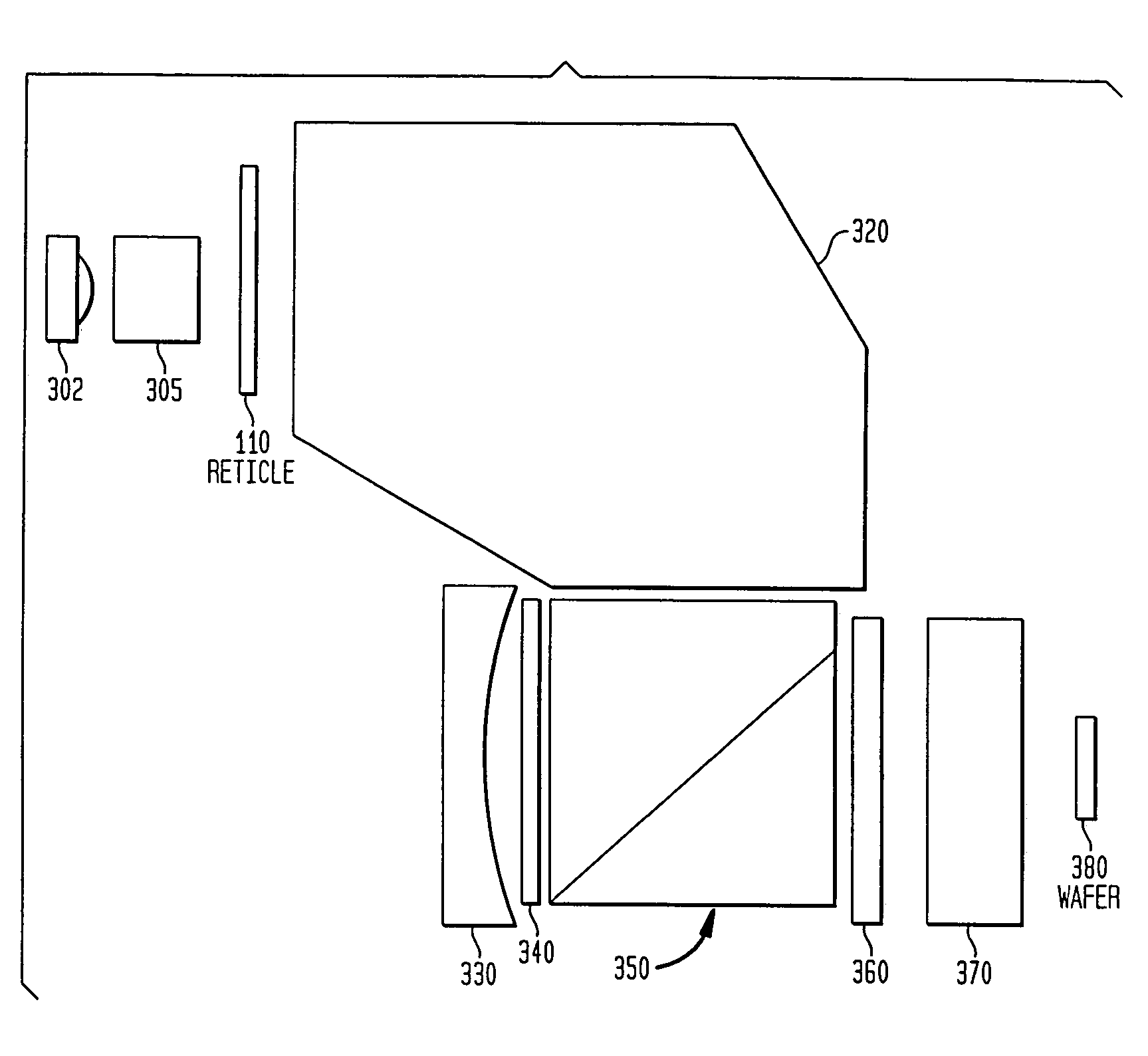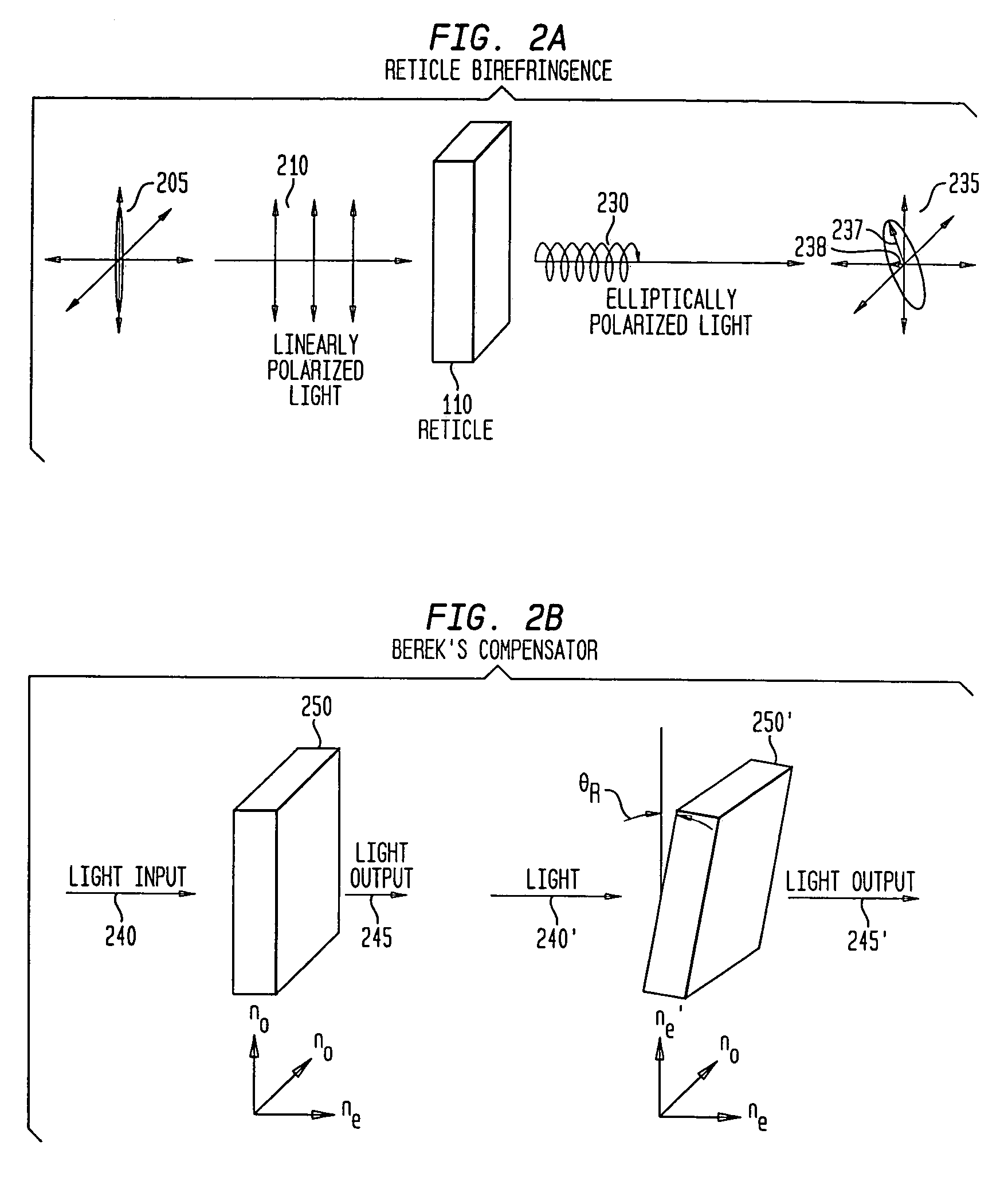Optical reduction system with control of illumination polarization
- Summary
- Abstract
- Description
- Claims
- Application Information
AI Technical Summary
Benefits of technology
Problems solved by technology
Method used
Image
Examples
example implementations
V. Example Implementations
[0076]A. Optical System with Control of Laser Illumination Polarization
[0077]The present invention uses variable wave plates to minimize dose errors in a polarization sensitive projection optic system caused by the variation of birefringence over the reticle. As described with respect to the figures, a single polarization compensator provides a single correction for the entire reticle. In one embodiment, multiple complex correctors can provide a correction that varies as a function of reticle position.
[0078]In another embodiment, the compensator system can be designed to offset the illumination polarization to compensate for local reticle birefringence.
[0079]In one embodiment, for dose control, the polarization state can be evaluated over the exposure. For example, the polarization state can be averaged over the reticle. FIG. 3 illustrates an embodiment of the present invention that eliminates such asymmetries or print biases. FIG. 3 shows a first optical c...
PUM
 Login to View More
Login to View More Abstract
Description
Claims
Application Information
 Login to View More
Login to View More - R&D
- Intellectual Property
- Life Sciences
- Materials
- Tech Scout
- Unparalleled Data Quality
- Higher Quality Content
- 60% Fewer Hallucinations
Browse by: Latest US Patents, China's latest patents, Technical Efficacy Thesaurus, Application Domain, Technology Topic, Popular Technical Reports.
© 2025 PatSnap. All rights reserved.Legal|Privacy policy|Modern Slavery Act Transparency Statement|Sitemap|About US| Contact US: help@patsnap.com



